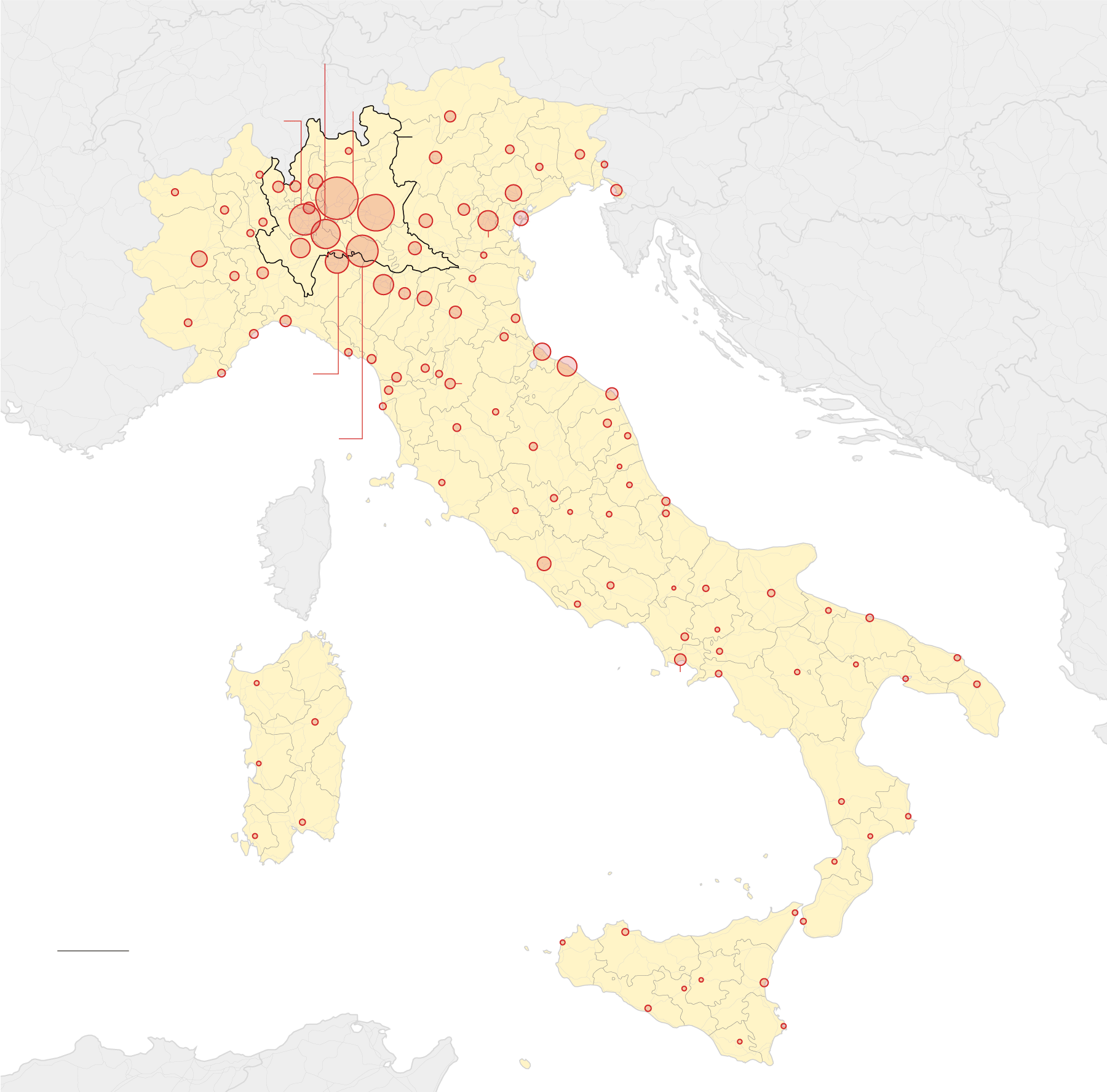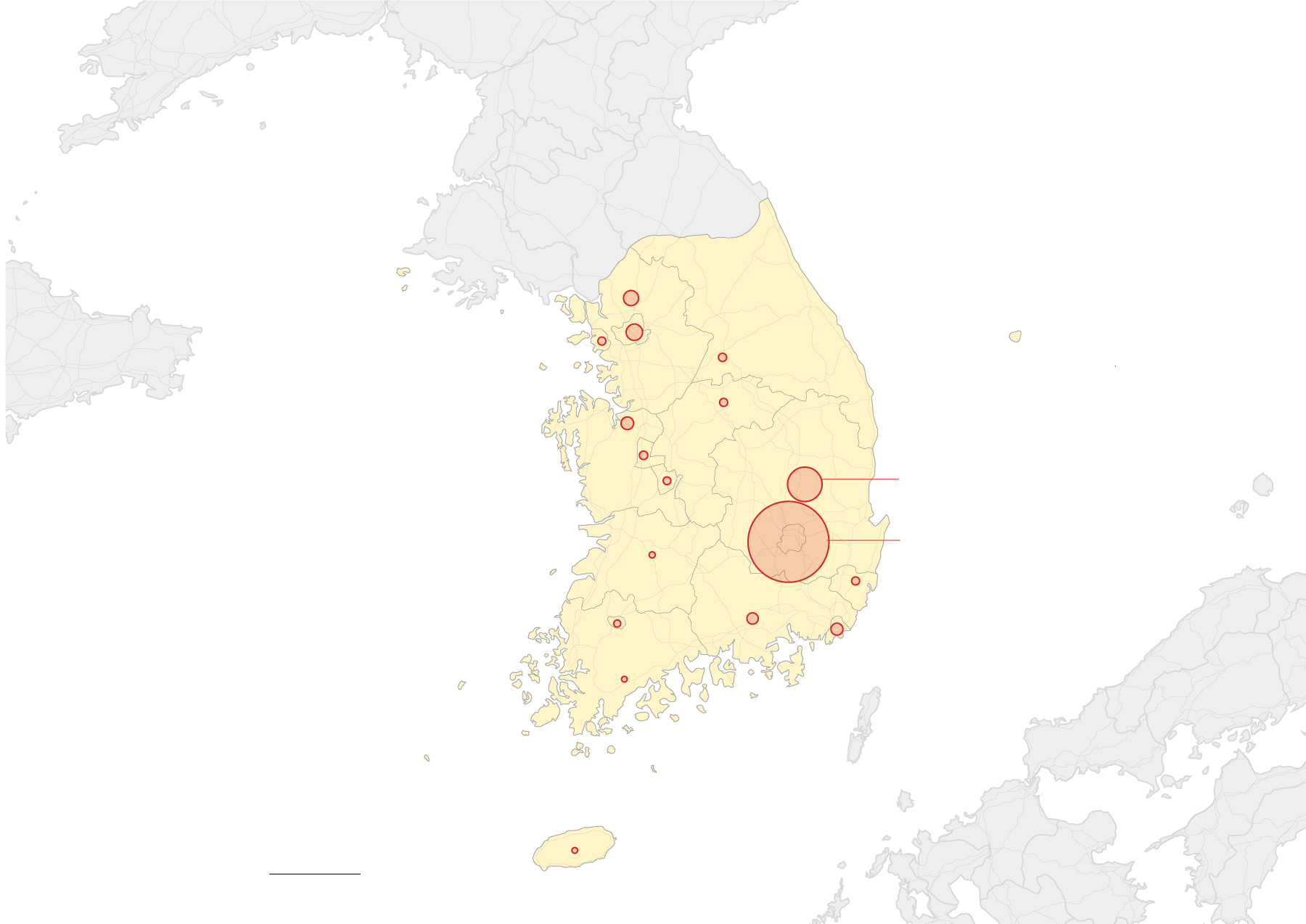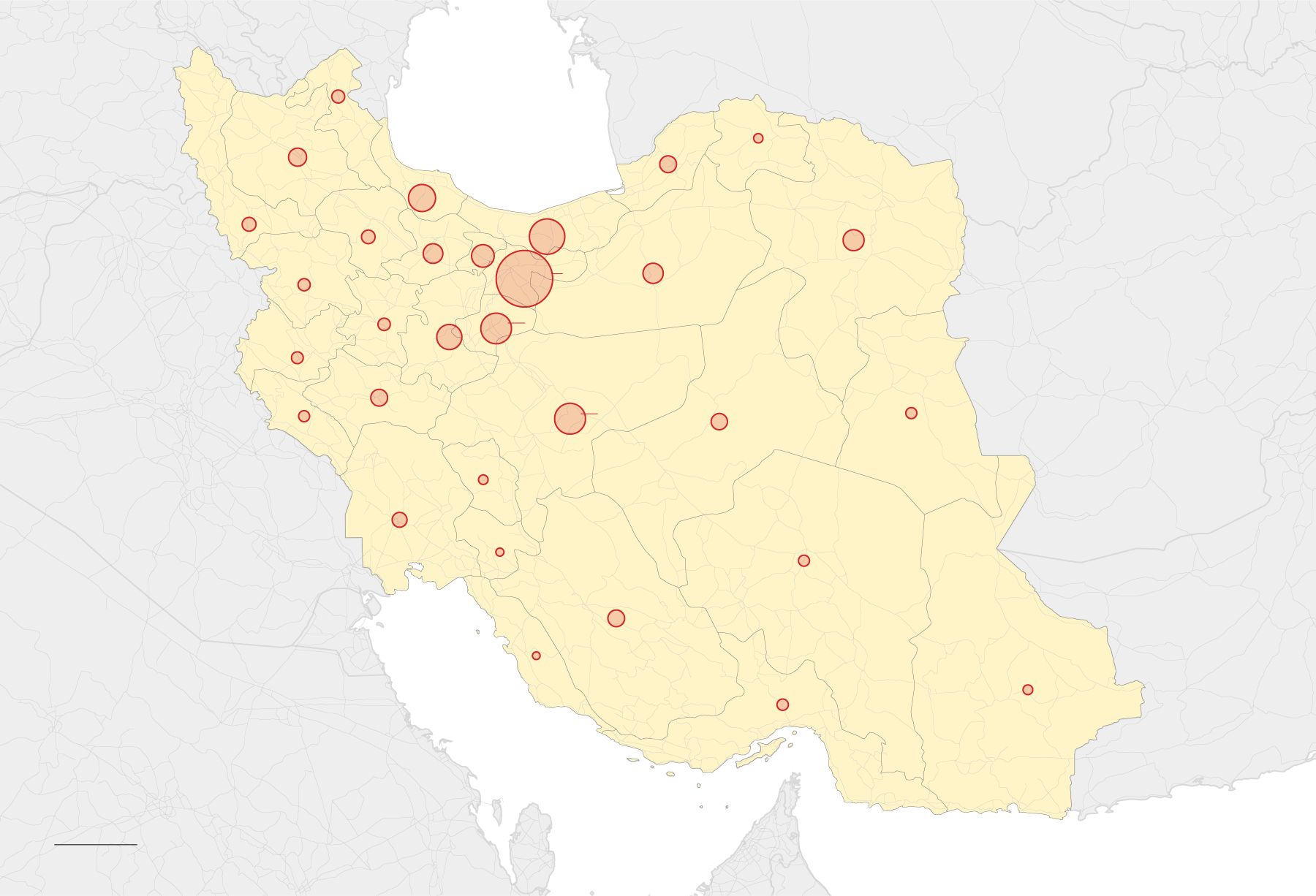تقرير مهم للنيورك تايمز
بالنسبة للشرق الاوسط الوضع في ايران سئ جدا ومصر هنالك تعتيم غريب وتقليل من الموضوع بشكل لا يتناسب مع الحالات التي صدرتها
How the World’s Largest Coronavirus Outbreaks Are Growing
By Anjali Singhvi, Allison McCann, Jin Wu and Blacki MigliozziMarch 12, 2020
Milan, Italy. Daegu, South Korea. Qom, Iran. Many of the world’s largest coronavirus outbreaks took root in and around well-traveled cities, but they have since grown to encompass entire countries.
Cases have spread across Italy’s north and down to Rome, leading to a lockdown of the entire country. Iran’s capital, where leaders dismissed the virus just two weeks ago, has seen thousands infected. And cases continue to surge across Europe.
| NEW CASES IN PAST WEEK | TOTAL CASES | CASES PER 100K RESIDENTS |
|---|
Italy | 24,122 | 27,980 | 45 |
Iran | 11,478 | 14,991 | 18 |
Spain | 7,494 | 7,753 | 16 |
France | 6,253 | 6,633 | 10 |
Germany | 5,530 | 6,012 | 8 |
South Korea | 1,781 | 7,869 | 16 |
Sources: Local governments; The Center for Systems Science and Engineering at Johns Hopkins University; CIA World Factbook. Data as of 4:59 p.m. E.T., Mar. 16.
The outbreaks are not all heading in the same direction. South Korea has managed to slow growth of new cases for now, through intensive testing and monitoring of infections. Italy, Iran and the United States are still reporting large numbers of new cases every day.
Official case totals are an imperfect method of judging the world’s outbreaks. Every country has more cases than it has been able to detect through lab tests. And a shortage of testing kits in some countries, like Indonesia and the United States, along with a lack of public disclosure in others, like Egypt, means official reports are probably masking large outbreaks.
Here’s the extent of some of the largest outbreaks in the world and information on how these countries are trying to slow the spread of the virus.
Italy
An outbreak in Lombardy has threatened the entire country.
Lodi
1,135+
AUSTRIA
HUNGARY
Bergamo
2,365+
SWITZERLAND
Milan
1,305+
LOMBARDY
SLOVENIA
Brescia
1,780+
SERBIA
CROATIA
FRANCE
Venice
245+
300+
Padua
520+
480+
BOSNIA
AND
HERZEGOVINA
250+
515+
360+
495+
Piacenza
705+
Florence
100+
155+
Ancona
ITALY
Cremona
1,340+
ITALY
Rome
215+
Bari
ITALY
Naples
135+
50 MILES
Catania
By The New York Times | Source: Italy Department of Civil Protection | Note: Data shows total number of cases as of March 13.
With more than 17,000 confirmed cases, Italy has reported the largest outbreak outside of China. Italian authorities first put restrictions in place in the northern region of Lombardy, where the outbreak first accelerated, before moving on Monday to restrict the movement and end public gatherings for all 60 million citizens in the country. At least 1,000 people have died because of the virus.
On Wednesday, the government shut down basically all commercial activities, including bars and restaurants. Supermarkets, pharmacies and newstands can remain open. All schools are closed until at least April 3. But Italy’s nationwide lockdown, the first in Europe, is not a severe ban on movement like the one put in place in Wuhan, China. Italians are still able to move around for work, to buy groceries and other essentials, and for reasons having to do with health, child or senior care. Police checkpoints have been set up around the country, at which people are required to stop and fill out official forms explaining their movements.
The number of new cases in Italy had steadily increased for more than a week before dropping on Tuesday. On that day, though, there were still almost 1,000 new cases.
New coronavirus cases announced in Italy each day
0
500
1,000
1,500 cases
Jan. 22
Mar. 10
By The New York Times | Source: Center for Systems Science and Engineering at Johns Hopkins University.
Italy is aggressively testing for the virus, which could help explain why its total confirmed cases are higher than some other countries in Europe. On Tuesday, more than 60,000 tests had been performed, more than twice as many tests as the United Kingdom had done.
“Today, the red zone is Italy,” Matteo Renzi, a former prime minister, told The New York Times. But in 10 days, he warned, it will be Madrid, Paris and Berlin. If Italy cannot show how to stop the virus, he said, “the red zone will be Europe.”
South Korea
The outbreak has slowed after weeks of intense surveillance and testing.
NORTH
KOREA
Seoul
220+
Incheon
25+
Chungnam
province
110+
SOUTH
KOREA
Gyeongbuk province
1,145+
Daegu
5,900+
Gyeongnam
province
80+
Busan
95+
JAPAN
50 MILES
By The New York Times | Source: South Korea Division of Risk Assessment and International Cooperation | Note: Data shows total number of cases as of March 13.
In contrast to most other countries, South Korea’s reports of new cases have begun to slow — at least for now. Unlike other countries with major outbreaks, South Korea, with a population of 50 million, has not outright restricted the movement of its citizens and has instead focused on aggressively monitoring for infections. More than 7,900 cases and 66 deaths have been reported.
New coronavirus cases announced in South Korea each day
0
500
1,000
1,500 cases
Jan. 22
Mar. 10
By The New York Times | Source: Center for Systems Science and Engineering at Johns Hopkins University.
More than 235,000 people have been tested, and health officials carefully track down people who may have symptoms, testing more than 10,000 people each day. The government even opened drive-through testing centers. While health officials are battling smaller clusters of infections in other cities, much of the effort has focused on Daegu, the center of the outbreak, where many people were infected in a large church congregation.
Health officials also introduced aggressive public awareness campaigns, sending out mobile phone alerts to citizens whenever a new case is reported in their districts. Updates are provided on government websites and mobile apps as to how many people have been tested and where, along with brief sketches on each patient: their gender, how they became infected and where they are being treated, as well as which places they visited before testing positive.
Officials have advised against holding large gatherings, like outdoor rallies and religious services. Schools remain closed.
Iran
The true size of the rapidly expanding outbreak is unknown.
TURKMENISTAN
90+
TURKEY
East Azerbaijan
275+
Golestan
230+
Gilan
680+
140+
Mazandaran
1,185+
Razavi Khorasan
390+
100+
Qazvin
335+
Semnan
360+
Tehran
2,975+
Alborz
460+
Qom 885+
AFGHANISTAN
90+
First cases of COVID-19 were reported in Qom.
Markazi
580+
75+
Esfahan
900+
Lorestan
230+
Yazd
215+
75+
IRAQ
IRAN
Khuzestan
125+
75+
Fars
230+
PAKISTAN
80+
50+
SAUDI
ARABIA
100 MILES
By The New York Times. Source: Iran Ministry of Health and Medical Education. Data shows total number of cases as of March 13.
Two weeks ago, Iran’s leaders denied the coronavirus epidemic would be a problem. Now, with the total number of cases standing at more than 11,000, and with more than 400 people dead, Iran is scrambling to control one of the worst outbreaks in the world.
The virus started in the holy city of Qom, where thousands of pilgrims from Iran and around the Middle East travel each day. Two days after the first deaths and cases of the virus were reported in Qom, Iran held parliamentary elections, which are widely believed to have been the cause of the virus spreading to other provinces.
New coronavirus cases announced in Iran each day
0
500
1,000
1,500 cases
Jan. 22
Mar. 10
By The New York Times | Source: Center for Systems Science and Engineering at Johns Hopkins University.
The authorities failed to take protective measures at this early stage. But the problem became impossible to ignore after nearly three dozen Iranian government officials and members of parliament were infected, and a senior adviser to the supreme leader died.
Now, Friday prayers are cancelled, and schools and universities are closed until mid-April. Government offices remain open, but employees must work reduced hours. For everyone else, officials are asking people to leave their homes only when necessary.
A severe shortage of testing kits in Iran means the spread of the virus is likely much higher than reported. One study projected a week ago that the true total of infections may have been more than 18,000, “and a week ago is eons when we are talking about an epidemic,” said Isaac Bogoch, a Toronto doctor who is a co-author of that study.






